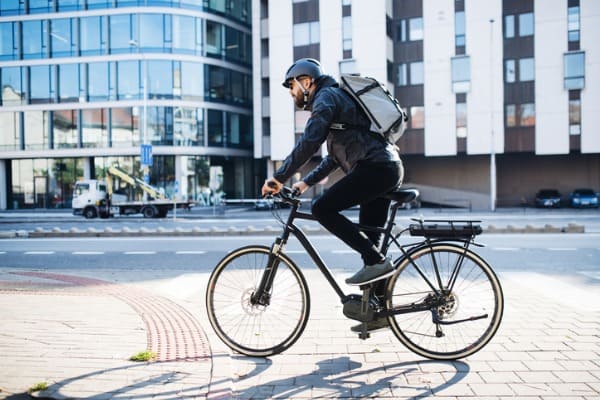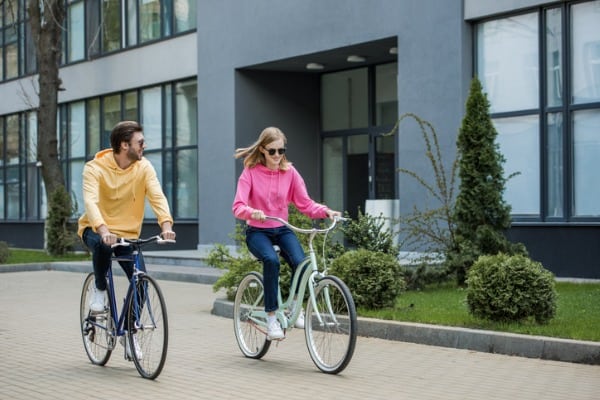
Cycling is a fun, environmentally friendly way to get from place to place. Cyclists are exposed to a high risk of collisions on the road. However, it is important for everyone on the road, including other cyclists, to know how best to protect cyclists in the case of an incident. Cyclist safety is something that both the authorities and bikers themselves should give special attention to. To ensure you receive all the compensation you deserve following a collision or accident, you must follow these steps.
Quick Navigation
1. Get To Safety
When involved in a collision, your first priority is to ensure that your safety is assured and that you are not causing any further danger to yourself and others on the road. This means getting off your bike and out of traffic as quickly as possible, even if you are not injured. After hitting the ground, get up as soon as possible, and make sure you’re clear of all moving vehicles before assessing your physical state and bike damage. Be aware of what direction the traffic is coming from. Getting up too quickly without looking may cause you to walk straight into an oncoming car or truck. If you are injured, do not move once you’re off the road until medical help has arrived. It is also essential to identify the driver of any vehicle that crashes into you for them to be held liable.
2. Inform The Police
If possible, you should report any collision to the police immediately after it occurs. Reporting a car crash to the police is important for various reasons, including crucial personal information, establishing fault, and getting people medical attention. It is a good idea to get all witnesses’ names and contact information, and especially the driver’s license numbers, if possible. Your interactions with the police officers after an accident should be positive and calm. However, if you find yourself in custody for questioning at any time following a collision, remember that remaining silent is always your right and contacting either a lawyer or relatives must be your priority. The police should provide you with the number of a victim support service so they can contact your friends or family for you if need be.
3. Exchange Information
If someone else was involved in a collision with you, be sure to exchange information like each other's contact details at the scene of the crash between yourselves. You may also want to consider taking pictures of any damage that occurred on both party’s property as proof of the circumstances if required at a later stage. It is important for people who are not cyclists to know how best to avoid accidents when around cyclists, so sharing this information helps protect others from suffering injuries or fatalities when dealing with bikes on the road. You should also document the names and contact information of any witnesses who saw the entire incident.
4. Take Pictures Of All Damage And Injuries
Once it is safe to do so, take pictures of any damage to your bike and your body. These will be especially important for demonstrating the nature of any injuries you may have sustained in the crash. When photographing damage done to vehicles or property after a collision, be sure that all photos are taken from multiple perspectives. It will help your insurance agent and injury lawyer strengthen your case. If you don’t already know the role of a personal injury lawyer in accidents, you can learn more here and protect yourself from a lot of legal issues. Make sure that you take multiple shots of each item, so there is no question about whether they are accurate. Take pictures of any visible blood or bruising as well as any cuts or scrapes sustained during an accident. Cycling accidents are dangerous, so it is important that any damage you sustained can be verified.
5. Report To Your Insurance Company Immediately
If a third party was involved in your collision, inform your insurance company immediately after calling the police. Quickly establishing these facts helps with the investigation process and avoids confusion over who was responsible for the accident in the first place. If you do not have personal insurance, report any accident to your car or bike rental company. Next, obtain the contact information of any witnesses who can support your claims of innocence. Finally, if possible, get all contact details for other cyclists, car drivers, or truck drivers involved in your incident. Having these details handy is a great way to speak with interested parties as needed.
6. Document Everything

Finally, when preparing a file for an insurance claim or while speaking with police officers and other people involved in collisions, all statements must be documented as accurately as possible. Statements should be brief and contain only evidence relevant to the case so that misunderstandings between parties are avoided when establishing how the crash occurred. Taking pictures of everything immediately after an accident occurs can also help keep things organized. This documentation is especially important if you plan to take legal action following an incident involving injuries sustained during the collision because it helps prove who was responsible for causing these damages.
These are some helpful tips for cyclists to keep in mind when involved in a collision of any kind. Cyclists are often injured in collisions with other vehicles and should be aware of the steps that need to be taken after these accidents happen. If you are involved in a cycling accident, get yourself to a safe place and immediately contact the local police. Be sure to call your insurance company and create a file for your case. Additionally, make sure to get the contact details of any other individuals that may be involved in your incident. Finally, be sure to take pictures and document everything. Without assessing the situation quickly, you may end up facing complications in court that could have been avoided if you had simply acted more responsibly.
